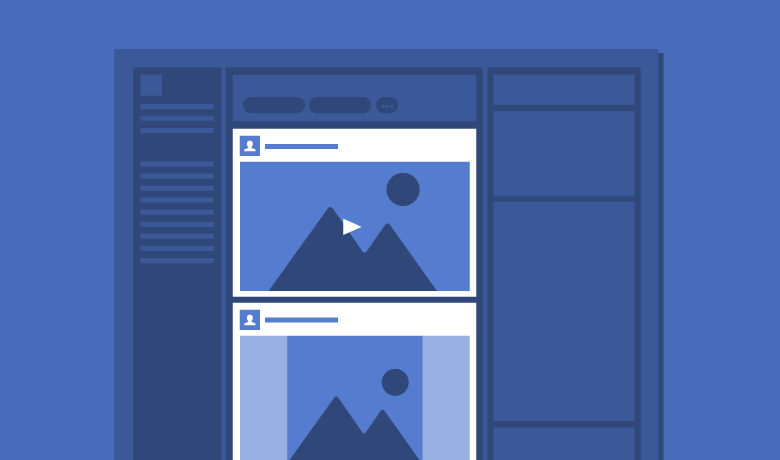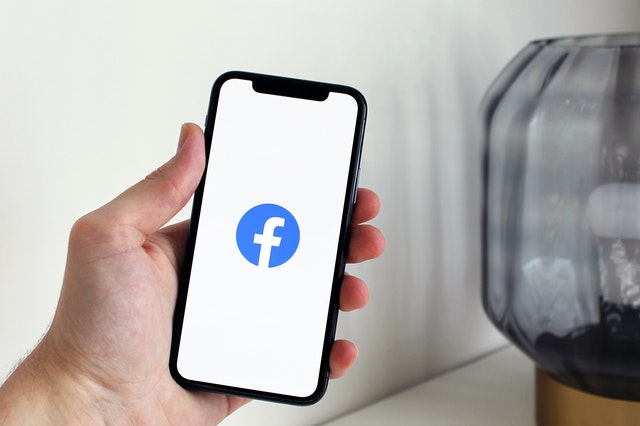9 Ways to Prevent Ad Fatigue and Create Effective Ads
Have you felt like you watched an ad way too many times that you were just tired of it? In the world of marketing and advertising, this is called ad fatigue.
Ad fatigue isn’t limited to social media. You’ve probably experienced it while watching TV or listening to the radio. When an ad keeps coming up over and over and over again…Urgh!
On TV or the radio, you can mute the channel, switch to another one or turn it off. On social media, you hide the ad.
If you’re an e-commerce business running ads on social media, your customers might be having the same problem with your ads. They are suffering from ad fatigue and are hiding your ads instead of interacting with them or converting.
This will result in lower conversion rates among other problems for you.
Table of contents:
- What is ad fatigue?
- 3 Reasons behind ad fatigue
- Signs of ad fatigue
- 9 ways to prevent and avoid ad fatigue
We’re going to dive deeper into ad fatigue along with tips on how online businesses can prevent it.
What is ad fatigue?
Ad fatigue is when your customers and target audience see your ads too many times that they are no longer interested in your product or service.
Once customers tire of your advertising, they stop paying attention, making your ads ineffective. This, in turn, negatively affects your profits and overall ad spend.
Running an e-commerce business can be tough. Here are 34 E-commerce Quotes to Keep Your Motivated and Offer Some Inspiration
As an online store or business, you’re running ad campaigns so you can attract customers and help them convert from mere viewers to buyers.
But if your audience grows tired of your ads, they’re not going to convert. In fact, they’re less likely to want to see anything that’s coming from you for a while.
Not to mention, fatigue means you’re spending money that’s not translating into conversions. You’re not getting a good return on ad spend (ROAS), traction on your website, and your average customer acquisition cost is increasing.
Reasons behind ad fatigue

Customers grow bored because they’ve seen your ads more times than they can count.
Here are a few reasons why your ads are resulting in unhappy and uninterested customers:
1. Same ad too many times
Your customers are seeing your ads more times than they need to.
So your ads have either become normal to them that they scroll past them without giving them a second thought or they start hiding them because they are too frequent.
2. Creating low-quality ads
Your ads are of low quality, whether in terms of copy or visuals or call-to-action, making customers disinterested or unwilling to trust you.
3. Using the same visuals
When a customer sees an ad, the first thing they notice is the visual. Even if you change the ad copy, the visual is still what they see first.
Repeated use of the same visuals creates ad fatigue, prompting customers to just scroll or walk on by and ignore your ad.
Signs of ad fatigue
So how can you know if your audience is suffering from ad fatigue?

Here are 4 main indicators that your audience has had enough of your ads.
1. Lower engagement
If customers are engaging with your ad then it’s a good sign it’s performing well. Are customers asking questions? Mentioning friends? Leaving comments?
If they aren’t doing any of that and just scrolling past, it means the ad isn’t attractive or engaging to them.
On the other hand, if you get a large number of engagements but then these interactions drop significantly, it’s probable that your customers are suffering from advertising fatigue.
2. Lower CTR
The click-through rate (CTR) is one of the top e-commerce KPIs and customer acquisition metrics for anyone running an online business.
The CTR is the average number of people who have expressed interest by clicking your ad.
For example, if you’re selling a variety of t-shirts at a 10% discount and customers are clicking the ad and converting, then you’re likely to see a high CTR from your ad.
However, if your ad starts outperforming well in terms of CTR, then the rate plummets, it’s likely because of ad fatigue.
3. Higher CPC
As your CTR decreases from recurring ads, your cost-per-click (CPC) increases. This means you end up spending more money on advertising, while getting fewer results and conversions in return.
4. Lower impressions
While the number of impressions is a kind of vanity metric, it’s still a way to see if customers are getting tired from seeing your ads or not. Like engagements, if you notice a major and sudden drop in impressions, ad fatigue is the likely culprit.
You’re probably wondering now:
Is it possible to prevent ad fatigue?
And the answer is Yes! Keep reading to find out how.
How to prevent and avoid ad fatigue

Advertising fatigue is a major obstacle for many businesses, one that’s often overlooked as marketers focus on running the ads rather than on the customers and how they feel about the ad.
It’s usually because people saw your ads too many times. This can be during the same day, week or over a period of time.
If Facebook is your main advertising platform, you probably know that while you can no longer tweak your Facebook frequency cap, you can still monitor your Facebook ad frequency for better results.
By looking into the data from the above metrics, you can determine how your customers feel about your ads and how and when they start to feel they are too much.
Preventing ad fatigue is quite easy and doesn’t require as much effort as you’d think.
Here are 9 tips to help you avoid ad fatigue among your customers:
1. Change your visuals and ad creative
You’ve probably already guessed this one. Visuals are the first thing people notice. So a logical and easy option would be to change your ad’s visuals or background color.
This minor change can make your ads appear as if they’re brand new.
Bonus tip: If you’re planning to run your ad for a long period of time, you can create several images for the same ad and change them on a weekly basis or every 2 weeks.
In addition, you can change the overall format for how the visuals – or ad creative – appear. For example, if you’re using a single image, you can create a carousel of images or a short video slideshow.
Bonus tip: Alternate between dynamic and static ads for more engagement and variety.
2. Create multiple ad versions
A good way to overcome advertising fatigue is by creating multiple versions of the same ad, while changing both the visual and the copy.

Doing this also allows you to see which ad version is more attractive to customers and performs better.
Bonus tip: Do this with the A/B testing option on Facebook and other platforms to see which ads perform better and engage your customers.
3. Reduce ad frequency
We’ve mentioned that the higher the frequency of an ad appearing to a customer, the more likely they are to suffer from ad fatigue.
This means that by reducing your ad frequency, you can prevent fatigue and bored customers.
While Facebook has removed the option to tweak your frequency cap, it does still show your ad to customers at least twice. Which is good.
But this frequency can increase to five, six, or maybe even seven times. That’s when you need to jump in and change parts of your ads, like visual and copy. You may event want to pause the ad itself.
Otherwise, your customers will get Facebook ad fatigue – or any-other-platform-fatigue.
You can also automate this process using Facebook’s automated rules from your Facebook Ads Manager.
4. Use Google’s ad customizers
If you’re running a pay-per-click (PPC) campaign, one of the benefits of using Google ads is its ads customizer option.
These ad customizers help you increase your conversions and make your ads look like they’re new, while also giving customers a sense of urgency to click your CTA.
“Ad customizers dynamically update your advertisements with content that’s tailored to your audience, and deliver that content in a time-sensitive manner,” explains HubSpot.
For example, if you’re running a special promotion for a specific period such as Christmas or Black Friday, using ad customizers will help you tell customers about your offer “in real-time when it’s most relevant to users.”
“You can use this feature for one-time situations, recurring events, or location-specific opportunities. Even better, once you get them set up, ad customizations are pretty hands-off,” adds HubSpot.
5. Update your audience
This tip might not be applicable to all businesses, but if your customers are fatigued by your ads, maybe it’s time to look for new customers.
5. In this case, you’ll be showing the same ads but to a new segment of people.
You review your customer segmentation strategy or expand the customer segments you’re targeting and show your ads to those new customers.
Generating lookalike audiences from your custom audience can create new opportunities for your store.
6. Use video
Video marketing has been making waves lately with new statistics coming out every year to show the people are watching and engaging more with videos.
Data by Social Media Week shows that 78% of people say they watch online videos each, while 55% of those watch videos on a daily basis.
“More than half (54%) demand more video content on top of what they already consume,” it said. Social Media Week also found that 99% of marketers were planning to use video marketing, while 88% were committed to “devoting more dollars to such campaigns in the future.”
It’s worth noting that the global digital video advertising market size was estimated at $19.7 billion in 2019 and is forecast to grow at a compound annual growth rate (CAGR) of 41.1% from 2020 to 2027, according to Grand View Research.
This means there’s major opportunity for creating video ads and using them to attract more customers and fight ad fatigue.
It’s also worth remembering that video ads have a lower CPC compared to static images.
7. Use UGC User Generated Content
People often believe what others like them have to say about a product or service. Better yet, when that review or rating is accompanied by a picture. That’s where user-generated content (UGC) comes in.
Data shows that UGC influenced 84% of millennials’ buying decisions. This is something you can use to your advantage in your ad campaigns.

Moreover, data compiled by Neonbrand shows that 25% of Google search results for the world’s top 20 brands are links to user-generated content.
If customers have praised your products on social media, use this as user-generated content to attract new customers.
8. Exclude your custom audiences
Another opportunity to reduce fatigue would be to exclude your custom audiences. These are the people that have already engaged with your ad or website.
Instead, you can include them in other retargeting campaigns but reduce their viewership of your current ads which they’ve already interacted with.
9. Continuously monitor your ads
While you’re probably already doing this, it’s important to continuously monitor your ad campaigns and their performance.
In some cases, merely changing the ad copy or the visual may not be enough.
But by keeping an eye on your campaigns’ performance, you can avoid ad-fatigued customers. Not to mention, if you don’t see how your ads are doing, you won’t notice when your audience is no longer interested in your ads and products.
Your ad frequency and CTR will be the top metrics you’ll want to look at while monitoring your campaigns.
Next Steps
If your customers suffer from ad fatigue because of your repeated ads, they’re likely to hide or block them. Facebook translates these acts of hiding and blocking as negative feedback. Something you want to avoid for your ads and brand.
Should you get many hides or blocks, this may negatively affect your ad account.
Let’s not forget that recurring ads result in higher CPC, lower CTR, and other negative side effects that mean more money spent and less value gained.
This means that by clamping down on ad fatigue, you ensure that you’re getting a higher ROAS.
Now it’s time for you to go over your current ads and look at their performance. Notice anything amiss? If you’re still planning a new ad campaign, be proactive and use one or more of the above tips to save time.
